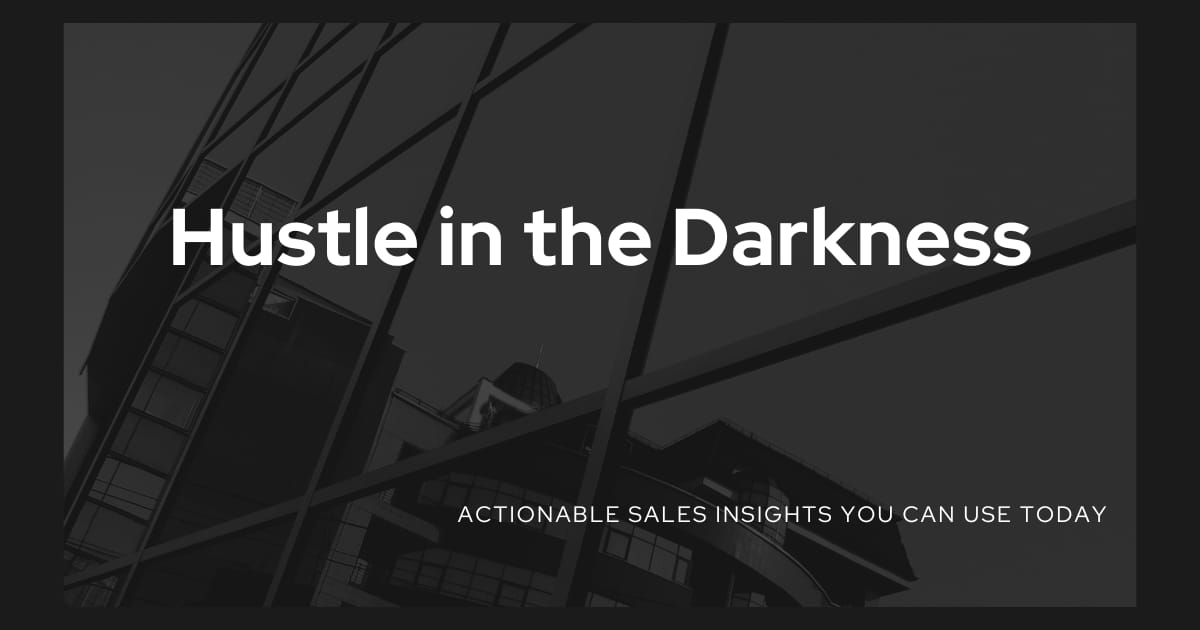Read on: My website
Read time: 2 minutes
Ever taken a blindside hit? I have taken these hits more times than I can count playing rugby. It’s no fun (at all). It takes me a second to catch my breath, get back on my feet, and get my head back in the game. I feel it way after the game, into the next day too.
Ever taken a loss from an opportunity that you thought you should have won and that you never saw coming? Why yes I have. That’s a mental tackle and it packs a powerful punch. Hit me hard…hit my boss and executive team a lot harder.
They were expecting us to win, why didn’t we win? Where did I/we/us/the company go wrong?
Every day we are out talking with clients, talking internally with our teams, talking with partners, building sales plans, pursuit plans, marketing templates, and the list goes on.
When we pursue opportunities, whether they are in their early stages or the opportunity is a proposal stage, we respond to that specific proposal based on the requirements that are outlined in the document.
However, there is another aspect of sales pursuits that does not get discussed and is incredibly critical to any pursuit and packs the most important punch, the unwritten requirements.
Let’s dance.
Was this forwarded to you? Click below to subscribe!
Brace for Impact…How to Avoid a Blindside Hit
We naturally want to see our offerings fit to what the customer needs are. From Lunch-n-Learns, customer meetings, existing account development, and so on, we want to sell what can help us grow our overall footprint. Our offerings are just one piece of the overall customer puzzle.
If there is an upcoming opportunity that we are pursuing, we want to make sure the customer knows that we are interested and we can achieve the requirements of the opportunity.
Just because our offerings are a good fit, we need to know the customer, and they need to know who we are (and continue to know who we are).
Every opportunity is different. Therefore there might be different decision-makers, hot buttons, win themes, and priorities with your customer.
All of these are not listed in the requirements, you learn these through your development and growth with your customer.
These are all…unwritten requirements.
If there are requirements for an upcoming opportunity, we need to see how you can achieve them. We can talk all we want internally saying yes to this, yes to that, have our customer relationship management tool (CRM) up to date, but the real questions lie, with how well the customer knows us.
Know the Difference
What’s the difference between between hard requirements and unwritten requirements?
Hard Requirements
Specifications and requirements outlined in the RFI/RFx/RFP that you know are tangible and measurable assets that you need to deliver to the client. They are written down and you can specifically see what they are. You need to write to these.
Unwritten Requirements
These assets are critical to your overall business development and capture to help you position to win. When you get to a Go/No Go review, it becomes more about the customer, how are you aligned with their needs, and whether you can win it. It’s not if we should submit a proposal, but does the customer actually know who we are, are we writing towards the customer,
These requirements are always in any document, you need to build your relationship with the customer to establish this.
Having an intimate knowledge of your (potential) client and the items below to best position you for the win:
Here’s a Breakdown
Hard/Written Requirements
Requirements to submit a bid are outlined
Due dates, kickoff dates, etc.
Main Point of Contact
Contract Value
Performance Period
Scope of Services/Work
Legal/Contractual requirements
Compliance requirements
Evaluation requirements
Unwritten Requirements
Decision-Makers & Influencer(s) Mapping
Your Relationship Strength w/ Customer (Pros & Cons)
Your Key Interactions w/ Customer(s)
Champions (Who will advocate for you to win)
Customer Hot Buttons
Tailored Differentiators w/ Metrics
Win Themes
Past Performance
This is just a sample of the difference between the two. The larger the project, the more players are involved with the specific opportunity.
The main takeaway is that if you are only seeing what is written, there is a lot of work behind the curtain to pull these projects off. Get to that information and more importantly…
Get to those decision-makers and have them know who you are.
Why Should I Care?
Here’s why. Unless you shaped the whole opportunity, and you know exactly when the opportunity was coming out, the customer wants you/need you, you are going to have competition.
You can meet the requirements, and so can other companies.
Everyone is going to have a different relationship with the customer. The customer is going to have a different level of relationship (and trust) with the company submitting the proposal.
Here are a few questions to ask yourself:
How well does the customer know you, and do you know them?
Who (or what team) is making the decision?
Why would they pick you?
Why should your company invest in pursuing this opportunity, over another opportunity?
Who is your competition for this? What makes you different?
Is this reflected in your CRM?
Can you actually do the work as outlined?
Don’t Wait Until Go/No-Go to Address
The outcome of a Go/No-Go review is to determine if you should determine if a project is worthwhile to continue to pursue. You might have an overview of the opportunity, but the players are the most important aspect.
Don’t wait until the last minute to decide to discuss the unwritten requirements. Build on the unwritten requirements as soon as possible. Figure out who the players are, and get insight that will help you become more of a champion internally with the customer.
So when they read your proposal, they will know, yes, this is a company I can trust and can execute the work.
Addressing the unwritten requirements helps you focus on the people. Talk to me about the people, what their needs (not wants) are, and how are they thinking about you.
Whether this is existing account development, pursuing new opportunities, or you are finding one new customer today, focus on them, not your offerings.
Ask your team to discuss the unwritten requirements of your opportunities and see how it shifts to where the gaps are in who you and your company need to meet, so your offerings will ultimately start to align.
That’s all from me for this week. Have a great week.
Whenever you're ready, there are 2 ways I can help you:
Build your Sales CRM - Download our free Sales eBook on How Your Sales Team Can Maximize Your CRM Tool. Whether it’s Hubspot, Salesforce, or another CRM tool, make sure you leverage it to your advantage.
Awesome Sales Resources - Transform your sales engagement across Social Selling, CRM, Lead Generation, Enablement, and more.

